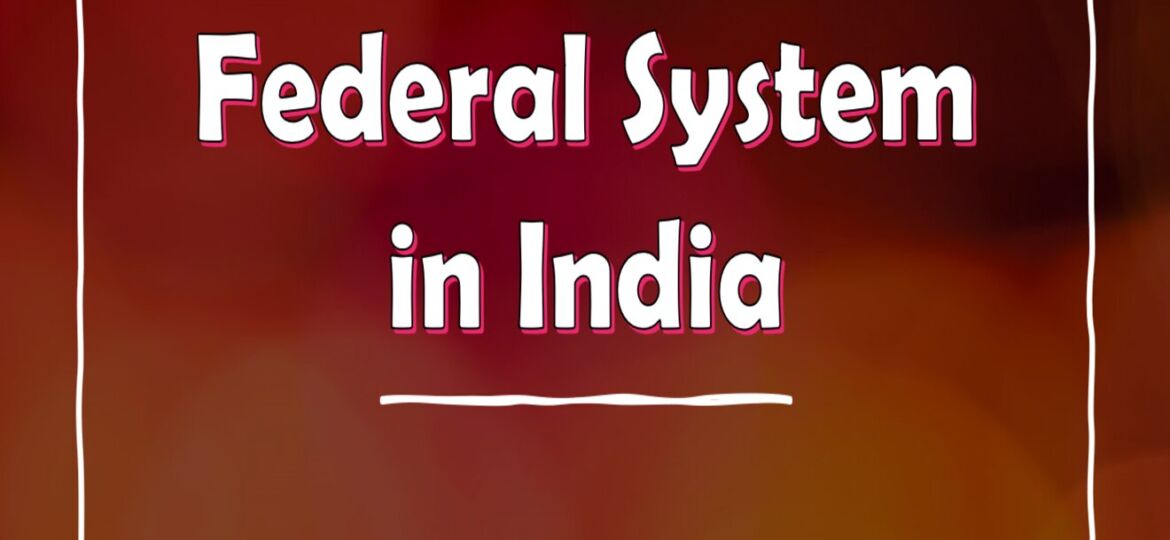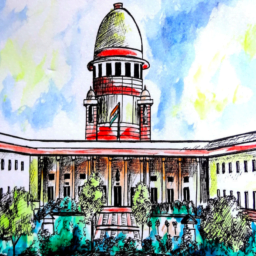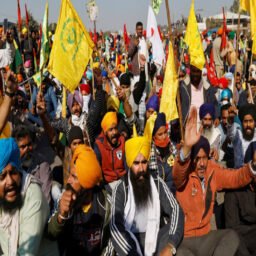
INTRODUCTION
As you may have noticed, whenever the existence, structure, and processes of India’s political system are discussed, India is referred to as an integrated country. In most cases, there are two types of provinces in the country. The United States is an empire with just one national government. The United Kingdom has a plan for unification. However, some regions, such as the United States of America and Canada, have two levels of government: an intermediate level and a state level. In addition to the two governmental bodies, the government system must also include the following three elements:
(i) A written constitution;
(ii) The division of powers between the federal and state governments, as well as
(iii) The size of the judiciary, which is responsible for interpreting the constitution.
India has an organizational system with all of these characteristics as well, but there is one major difference. Let’s take a closer look at the nature of the Indian alliance.
FEATURES OF THE INDIAN FEDERAL SYSTEM
- A two-tiered system of government:
You should know that the Indian Constitution divides government into two spheres: one for the entire country, known as the union government (central government), and another for each state entity, known as the state government. Apart from the Union and Government governments, local governments – both local and urban – are said to be constructing another level in India. India, however, has a two-state solution in its constitution. Local governments are not given a set of different powers by the Constitution because they remain under the control of their respective governments.
- Power Allocation:
Both the State and Federal governments, like other federations, have a constitutional standard and a clearly defined area of responsibility. The powers between the two spheres of government are clearly defined in the Constitution, allowing the Institute and the State to exercise their powers in their respective functional areas. No one crosses the line and interferes with each other’s activities. The Constitution divides this section into three lists: List of Unions, List of Countries, and Related Lists. The list of unions covers 97 of the most important national issues, including defense, trains, the post office, and telecommunications, among others. There are 66 issues of local concern on the Country List, including Public Health, Police, Local Government, and so on. There are 47 subjects on the Completed List, including education, electricity, trade unions, economics, and social planning, among others. Both the Union government and the national government have equal jurisdiction in this list. The Constitution, on the other hand, grants certain powers in matters not covered by the Union government’s List of Trade Unions, National List, or Allocations list. Resilience is a term used to describe this kind of power. If there is a conflict about the division of powers, it may be settled by the courts in compliance with the rules of the constitution.
- Written Constitution:
India has a very high written Constitution, as we’ve seen before. It also serves as a source of unity for both the Union and the Government. These governments are autonomous from one another. The alliance’s strong constitution is another feature. The Indian Constitution, while not as strict as the US Constitution, is not a dynamic document. It has a one-of-a-kind combination of toughness and versatility, as previously mentioned.
INDEPENDENCE OF JUSTICE
The independence of the court that interprets the Constitution and ensures its sanctity is one of the most important issues for the federation. To settle disputes between the Union and the States, the Supreme Court of India has jurisdiction. If you break any provision of the Constitution, you can declare the law unconstitutional. The judiciary also has the authority to settle constitutional and legal conflicts involving the division of powers between the Union government and the state governments.
INDIAN FEDERAL SYSTEM WITH A STRONG INSTITUTION
The Indian system appears to have all of the elements of a state system as a result of the above provisions. Have you read the sentence “India has an empire but a single spirit”? The Indian federal system does, in reality, have a powerful Union government. This is done on purpose, in light of the situation on the eve of the coming night of independence, as well as social and political circumstances. India is the continent’s largest nation, but it also has a lot of cultural and social diversity. The Constitution’s structure assumed that we needed a provincial constitution that could accommodate diversity. However, India faced challenges after independence, including maintaining unity and integrity and bringing about social, economic, and political change. Since India was not only divided into English-occupied Provinces during independence but also had over 500 Princess Nations that needed to be incorporated into new Provinces or countries, the Centre required such control. In reality, the Supreme Government made a conscious effort to improve. Aside from concern for unity, the Constitution’s framers claimed that the country’s social and economic problems needed to be resolved by a powerful, unified government working in collaboration with the states. Poverty, illiteracy, social and wealth disparities were only a few of the issues that needed to be addressed. As a result of their concern for peace and progress, the framers of the Constitution decided to create a strong, powerful government. Consider the following main provisions that have resulted in a powerful central government:
- The Constitution’s first section alludes to a new social structure in India. India would be a “Union of Nations,” according to the document. The Constitution makes no mention of India as the state’s property. In the Indian subcontinent, the central government is the sole authority. The State’s entire life, including its local integrity, is in Parliament’s possession. Parliament has the authority to “establish a new state by dividing the territory into any number of states or by joining two or more countries.” It also has the ability to alter a state’s boundary or name. The Constitution, on the other hand, offers some defense. The Central Government must safeguard the views of the state legislatures that are affected by these decisions.
- Second, the Union government benefits from the division of powers. All of the relevant lessons are included in the Union List. Furthermore, and in relation to the Charter, the Constitution places the Institute ahead of the States. In the case of a dispute between laws enacted in relation to the State’s Charter and laws enacted by Parliament, the law enacted by Parliament takes precedence. If the state wants the Central Government to pass a law, Parliament may pass a law based on the headline. If Rajya Sabha approves the change, this could happen.
- Finally, the constitution establishes a two-pronged approach to the judiciary. In India, on the other hand, we have either done justice or ascended to the Supreme Court.
- The central government has the most powerful control and financial resources. To begin with, the items that make money are under the institution’s influence. Grants and financial aid from the central government are extremely important to develop countries. India has also embraced planning as a medium for economic growth and post-independence development. This resulted in a decision-making demonstration as well.
- Finally, the Institute’s administrative capability is greater than that of the United States in terms of the constitution. The federal government has the authority to give directives to state governments. We also have a management structure that is integrated. Throughout the Indian subcontinent, all-India services are normal, and officials assigned to these services work in the country’s administration.
- As a result, the Central Government has jurisdiction over an IAS officer who becomes a collector or an IPS officer who becomes a Police Commissioner. Countries are unable to take disciplinary action against these officers and are unable to dismiss them. It is evident from the preceding debate that there is a bias in favor of the Institute when using American currency. The Institute needs nations to work together. This lends credence to the argument that India’s Constitution is a state with a united spirit.
The Indian Federation’s performance over the last 60 years clearly demonstrates that owing to the integrated government structure, ties between the Institute and the State have not always been strong. It is only inevitable that the United States of America will assume a larger position and influence in controlling the state and the world as a whole. As a result, states have periodically sought more control and autonomy. The Administrative Reforms Commission, the Sarkaria Commission, and other government-appointed commissions, most recently the Institutional and State Relations Commission in March 2010, have all worked to find a solution. However, there has been a growing recognition of the need for a permanent State Council.
Author(s) Name: Payal Ramesh Wayal (Maharashtra National Law University Aurangabad)
















